9 Ways to Save Money on Groceries in 2021
9 Best Tips to Save Money on Groceries
After housing, food can be one of your biggest expenses. Eating at home rather than eating out can save you a lot of money. But groceries are also a big expense, so careful planning and wise shopping can help you spend less.
Over the years, the types of food I buy and the amount I spend have changed. When my son was younger, I was a stay at home mom and we lived in a small town, so I had more time to shop the sales and go to several different stores to get their specials. Since I work outside the home now, I don’t have as much time for grocery shopping, but I still try to save money without spending tons of time. These tips can help you, too.
Why Do We Overspend on Groceries?
It’s easy to get carried away in the grocery store. You’re trying to figure out what you need for the week, everything you see makes you hungry, and…Wow, that’s a great price on shortbread cookies. (And if you have children with you, things somehow magically appear in your cart.) Next thing you know you’ve gone way over what you planned to spend, not to mention the time it takes, and you can’t wait to get home and try to forget the whole experience.
But with a little planning and some smart strategies, you can spend less time and money on your next grocery trip. You still may not look forward to it, but at least you’ll know you can keep the cost under control, and that can help you feel less stressed.
9 Best Tips to Save on Groceries
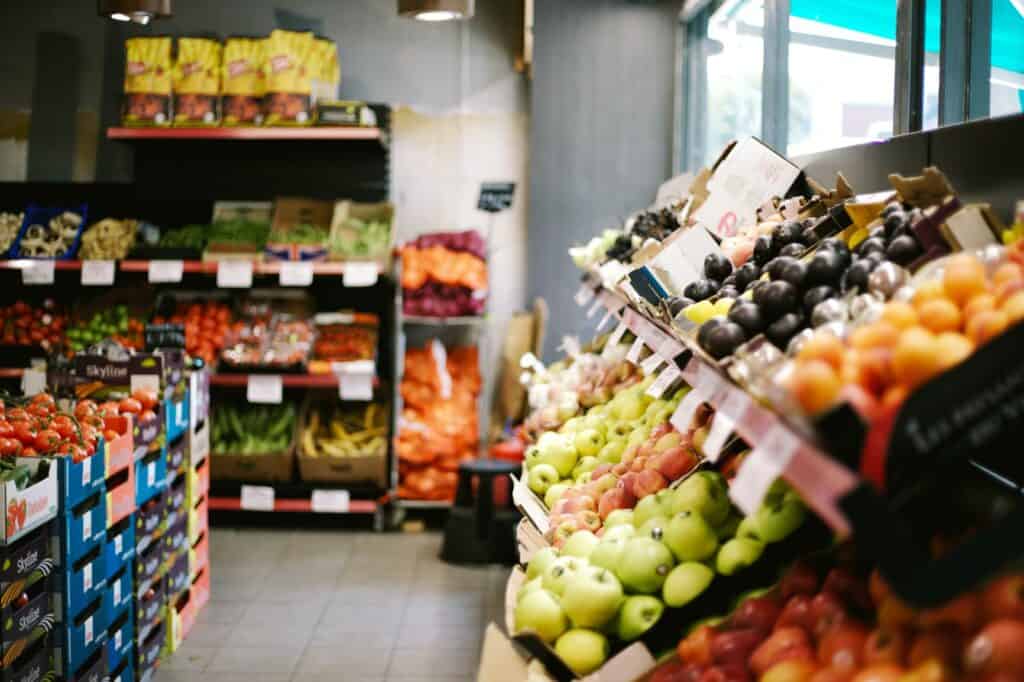
- Tip 1: Shop the specials, but don’t get carried away
Check out the grocery ads from the stores you actually shop at. Don’t drive all over the place to save a couple dollars (unless you really enjoy spending hours and hours grocery shopping), because your time may not be worth it. I limit my shopping to one main store, and sometimes I’ll go to a second store, but only if they have something I really want (especially if it’s something I can’t get at my main store), or lots of things I want that are on special.
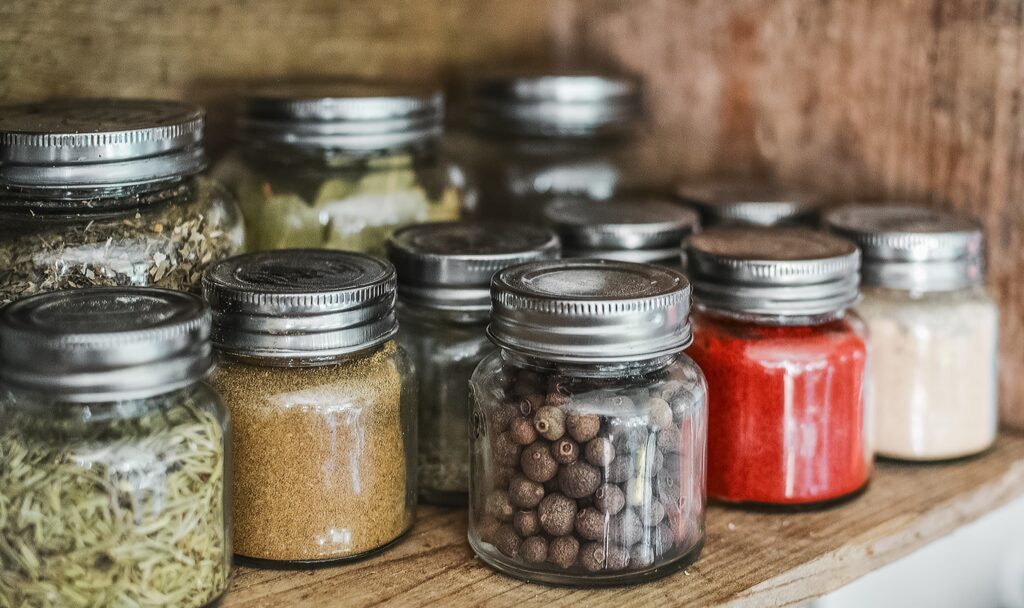
- Tip 2: Take Stock
If you have a full pantry, refrigerator, or freezer, go through it and find out what’s in there. (No judging.) See what you can use up instead of buying (again) and plan your meals around that.
Have you ever thought of making an inventory of your pantry and freezer? It’s a great way to keep track of what you have. You can cross things off as you use them, and then next week you can check your list and see what else you still need to use up.
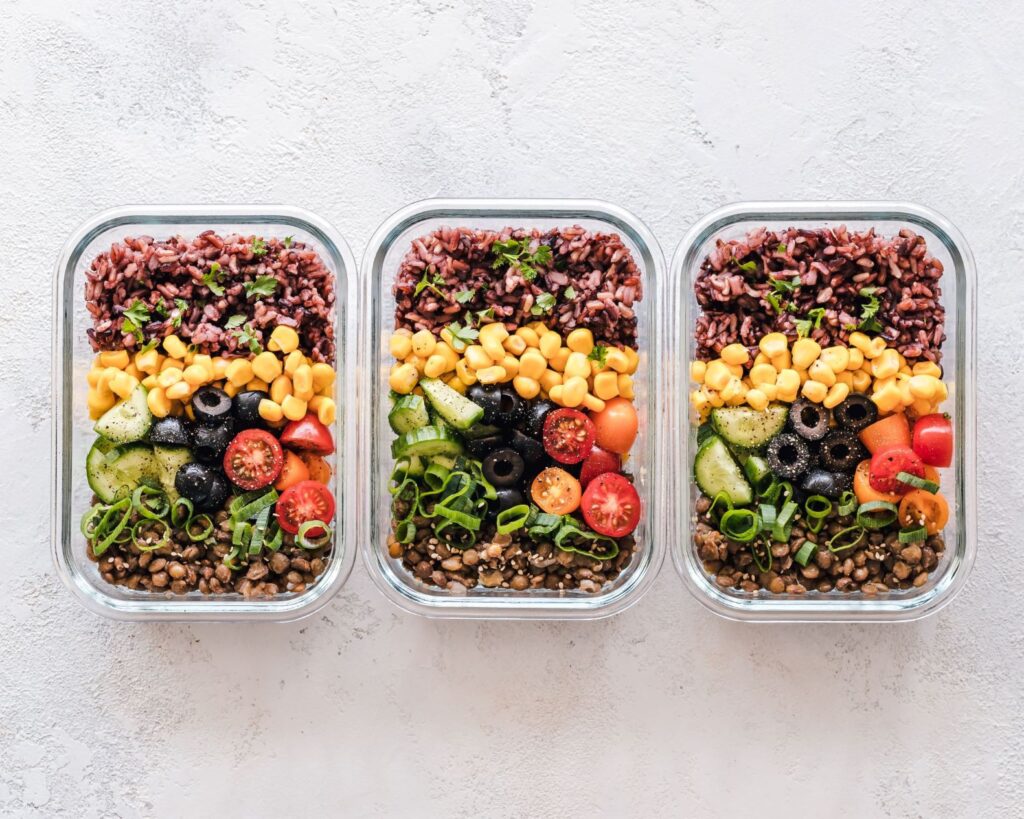
- Tip 3: Plan your meals
When you plan your meals, you won’t buy things that you don’t prepare and that end up spoiling. It will help eliminate the overwhelm because you have a plan and you know what you need.
Don’t let this part scare you! I understand; meal planning seemed overwhelming to me, too. But it doesn’t have to be super detailed or elaborate. Try the following to make it simple:
- Let each member of the household pick out a meal for one night of the week. That way you don’t have to think up something that your family will like; they can tell you what they’d like. The bonus is that they can help prepare it and learn valuable life skills. (Having them help clean up afterward also teaches life skills.).
- Make a general outline for each day of the week, then go from there. For example, chicken on Monday, fish on Tuesday, beef on Wednesday, etc. Then decide specifically what you’ll make and if you’ll need other ingredients. Or try a different method or type of food for each day of the week: stir-fry on Monday, foil packets on Tuesday, crockpot on Wednesday, etc.
- Keep a list of family favorites, especially the quick and easy ones. I have a recipe box with index cards of main dishes that I refer to when I need ideas for meals. On each card, I write the name of the dish, and if I have a recipe for it I’ll write on the card where to find it (in my actual recipe box, in a cookbook with the page number, etc.). I might also list the ingredients on the card so I can easily see if I have everything I need.
- Use what you’re going to buy that’s on special (see tip #1 above) and decide how you’ll prepare it.
- Use what you have on hand (see tip #2 above) and plan accordingly.
Once you’ve planned your meals…

- Tip 4: Make a list, but be flexible
You’ve probably seen the tip before to make a list and stick to it. That’s a great idea…to a certain point. A list does help you avoid impulse purchases, and it saves you from forgetting something and making another trip to the store, with the possibility of spending more than you planned – again.
But there’s one area of the store where I don’t make a rigid list, and that’s produce. There’s no way you can know everything that’s there and what it looks like. If it’s something you’re going to use in a recipe, you may have to suck it up, even if it’s not ideal. But when you’re buying fresh fruits or vegetables for side dishes or snacks, you may be better off waiting till you get to the store and see what’s on sale and what looks the best. If you buy produce that’s in season, it’s usually better quality and costs less.
Again, be careful not to buy too much fresh produce because it may spoil before it gets eaten, and that brings us to our next tip:
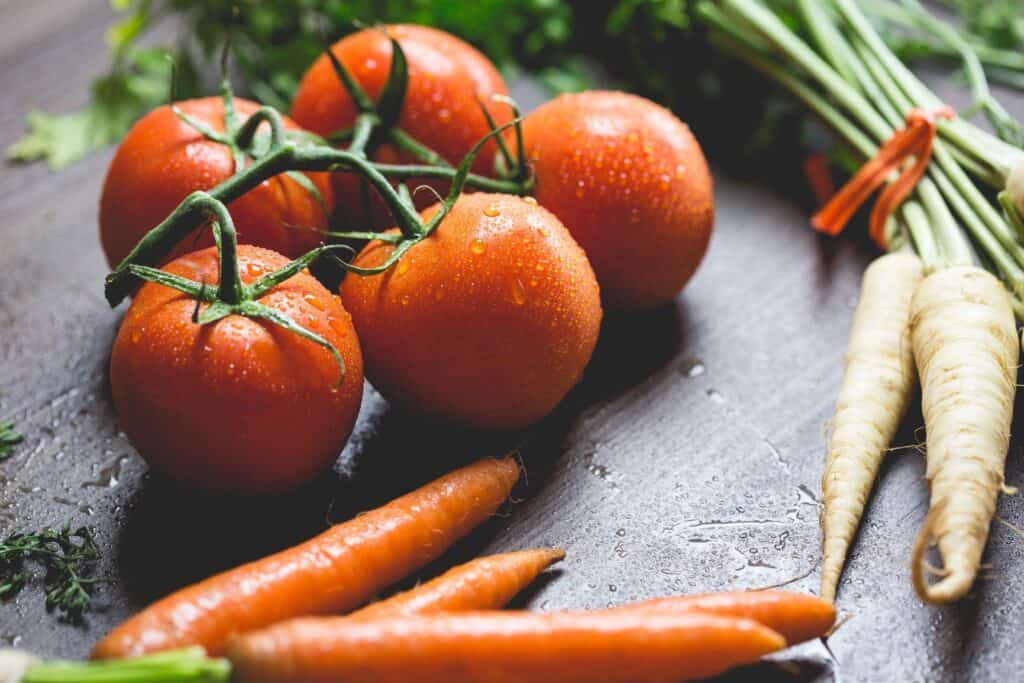
- Tip 5: Throw away less food
This may seem like a no-brainer, but some studies show that people throw away up to a third of the food they buy. Planning ahead by buying only what your family will eat (especially fresh produce) can help, but try to keep an eye on what’s in your fridge, pantry and freezer and use things before they have to be thrown away.
That includes leftovers. If no one in your family will eat them, be especially careful about how much you prepare for each meal. If your family will eat leftovers, hurray! There’s your lunch for tomorrow. Or try having a smorgasbord on the weekend: heat up all the miscellaneous leftovers from the week and let everyone help themselves to the gourmet buffet. (That can also save you some time by not having to make a new meal).
Your freezer can come in handy here, too. Freeze leftovers in single-sized servings and you can use them later for lunches.

- Tip 6: Stock up – carefully
Take advantage of the specials (see tip#1) to buy extra of items that you will use. For perishable items, you can divide them into meal-size portions (or individual portions) and freeze them in zip-top freezer bags. Be sure to label with the contents, amount and date! That way you can use them while they’re still good. And if you cook it before freezing, that will save you time later, when you’re wondering what’s for supper and carry-out sounds really tempting!
Grocery stores usually put certain items on sale on a regular cycle, for example, every 6 weeks. If you find that your favorite store does that, buy just enough to last you till the next time it’s on sale.

- Tip 7: Don’t Shop When You’re Hungry
You might have heard this before, but it’s worth repeating. When you’re hungry, EVERYTHING looks good. Especially the junk food. You feel like you better buy extra chips, snacks, drinks, you name it. If your shopping schedule happens to hit before a meal when you’re likely to get hungry while you’re cruising the aisles, at least have a snack before you go to take the edge off. Your wallet (and maybe your waistline, too!) will thank you for it.

- Tip 8: Try Generic Brands
They may not look as exciting or have the endorsement of a famous star, but your taste buds may not be able to tell the difference. And you may save a good amount of money. True, some generic items just aren’t quite up to par when compared with their name-brand counterparts. So if you really have a favorite and the generic won’t cut it, go ahead and buy your favorite. But when the generic is just as good, why not save a little and have the cash for something you really want?
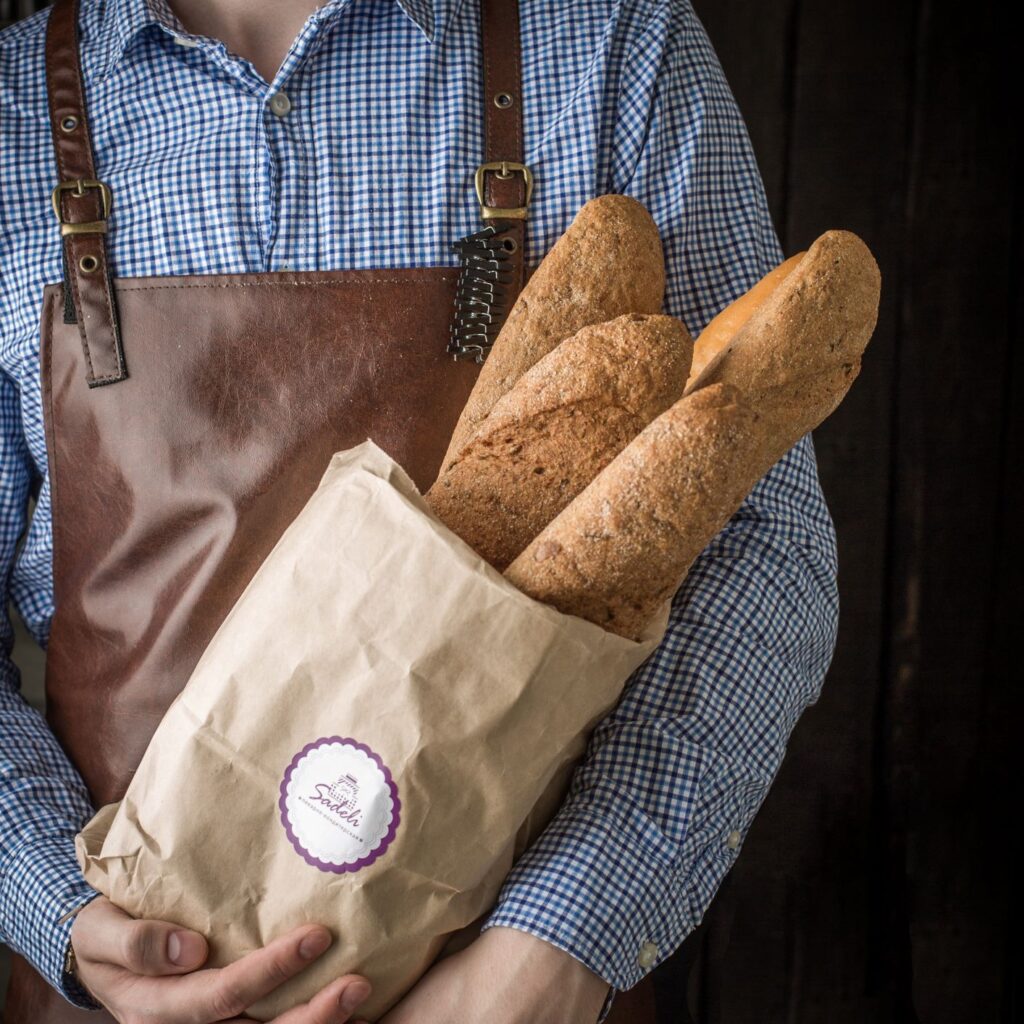
- Tip 9: Use Pickup or Delivery Service
The truth is, when I first tried Wal-Mart grocery pickup, I couldn’t really get into it. It would take me a couple hours to find everything and put it in my virtual cart. And I found it hard to find what I was searching for. It seemed like just as much work as regular shopping.
But as I used it more and got more familiar with it (and maybe they made it more user-friendly, who knows), I decided that it really did save me time. I discovered that it keeps track of what I’ve ordered before, and I can scroll through and check off the things I want to buy again so it goes pretty quickly. And most items have the price per ounce, pound, etc., so you can easily compare prices. (I hate trying to read those prices on the little labels on the shelf; is it just me or is the print way too small!!) So this kind of ties in with Tip #4 above (make a list), because if you order everything ahead you don’t go wandering the aisles getting stuff you never planned to buy and spending more than you expected.
Another advantage is that you can usually see what’s available in the store, and if they’re missing a key ingredient you need, you can change your menu right then and there instead of when you’re standing in the aisle and wondering what you’ll do now.
However, I have to admit that I do kind of a hybrid-pickup shopping trip. I just can’t bring myself to have someone else pick out my produce for me. I prefer to go and see what they have, what looks fresh, and what’s on sale. So I end up going into the store for my produce (about half an hour or so before my pickup is ready), then driving around to the side of the store to get my pickup order. That way I get everything done in one trip and save time (and money).
The Last Thing You Need to Know about Saving Money on Groceries
By planning ahead and finding the best prices, you can save money on groceries and make your shopping easier. I hope you’ve found some of these tips helpful. Why not pick one that you’re not already doing and try it this week. Let me know how it goes!
Do you have any favorite money-saving tips for spending less on groceries? Please comment below and share your ideas.




